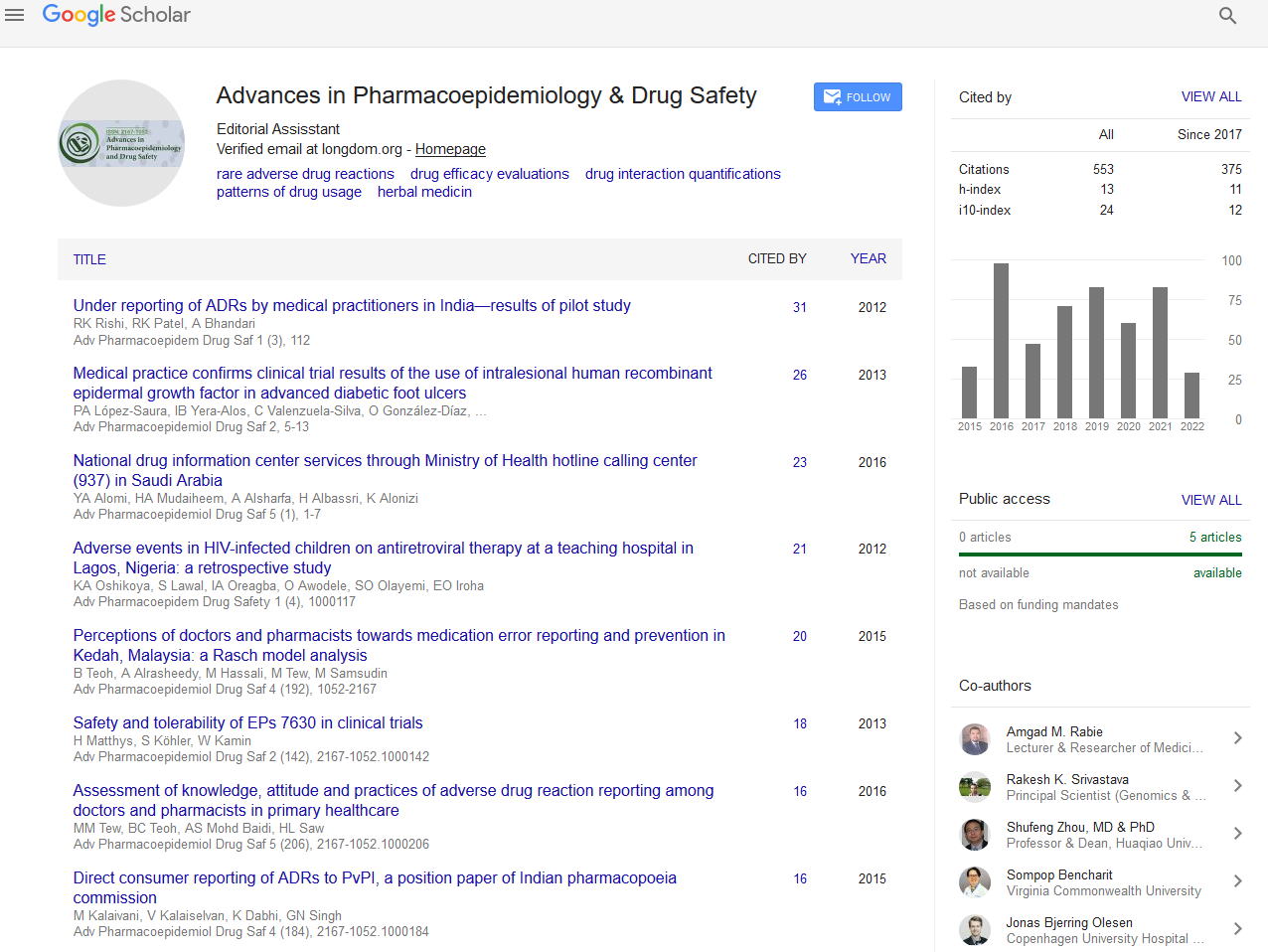Indexed In
- Open J Gate
- Genamics JournalSeek
- Academic Keys
- JournalTOCs
- RefSeek
- Hamdard University
- EBSCO A-Z
- SWB online catalog
- Publons
- Geneva Foundation for Medical Education and Research
- Euro Pub
- Google Scholar
Useful Links
Share This Page
Journal Flyer

Open Access Journals
- Agri and Aquaculture
- Biochemistry
- Bioinformatics & Systems Biology
- Business & Management
- Chemistry
- Clinical Sciences
- Engineering
- Food & Nutrition
- General Science
- Genetics & Molecular Biology
- Immunology & Microbiology
- Medical Sciences
- Neuroscience & Psychology
- Nursing & Health Care
- Pharmaceutical Sciences
Abstract
Drug Induced Liver Injury: An Algerian Descriptive Study
Amina Berradia*, Mekaouche FZN, Fetati H and Toumi H
Many drugs can be toxic to the liver, leading to severe or even fatal liver damage in some patients. In Algeria, the description and the incidence of this adverse effect (AE) remain unknown. In addition, no paraclinical examination confirms the diagnosis of drug-induced liver injury (DILI) because it relies essentially on so-called specific algorithmic causality assessment methods (CAM).
The objective of our study was to describe DILI cases at university hospital establishment of Oran (UHEO) and to contribute to the diagnosis and management of these cases.
A descriptive study (June 2011 - August 2017) was conducted on archived declarations in our service or on new reports from the various departments of UHEO. A special form has been designed to collect the information necessary for causality assessment. After collecting informations, the causality was assessed by a DILI-specific causality assessment method (CAM): the CIOMS scale.
At the end of this study, 33 DILI cases were reported, representing 15.1% of all registered drug AEs with an average age of 39.6 years and a sex ratio of 0.8 in favor of men. We noticed that this AE occurred for the majority of cases in the first 84 days. All reported DILI cases were acute, 61% of which were hepatocellular, 9% cholestatic and 27% were mixed. Stopping the drug was the most common strategy of DILI management (70% of cases) and 60% of cases progressed to complete recovery. According to the CIOMS scale, 59% of the incriminated drugs were antibiotics, followed by antiepileptics and diuretics (16%).
Our work has therefore helped to describe this AE as well as to highlight the limitations of diagnosis and management.
Published Date: 2020-10-27; Received Date: 2020-07-20


